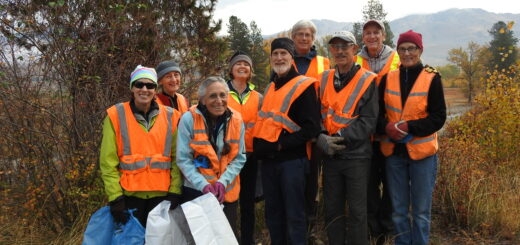How Plain area neighbors are preparing for wildfire
PLAIN — “This place is worth fighting for,” said Deb Newell of Mountain Springs Lodge as she looked out over the Plain Valley from Mountain Springs Lodge. She moved to the valley a dozen years ago and fell in love with the place and the people here.
Newell has been instrumental in leading the effort to develop a network of Firewise neighborhoods in the Lake Wenatchee and Plain areas over the last three years. With wildfires threatening the area during the past two summers, this cooperative and collaborative effort has taken off.
This effort is reducing the risk of losses from wildfire, but it is also instilling a stronger sense of shared purpose among long-time homeowners and folks who have purchased recreational property in the area.
The fire risk in this valley is extreme and people here are taking this very seriously.
What is being accomplished here is a shining example of how communities can develop a grass-roots approach to addressing wildfire risk. Federal and state agencies can be a big help, but we have to look ourselves in the mirror and do what we can do first. That’s how healthy communities come together to solve challenges.
The valley has four recognized Firewise neighborhood associations already, and another 15 have been formed and are seeking official recognition, according to Newell. It is creating a valley-wide network committed to mutual assistance in reducing the risk of loss in fires.
This effort had its beginning with the storms in December of 2012 when massive numbers of trees were uprooted after a perfect storm of ice, wind and snow, Newell told me. Neighbors began getting organized to clean up the properties of those who needed help.
That’s when Newell first became aware of the Firewise program, which encourages homeowners and neighborhood groups to work together to increase fire safety by creating defensible space around homes, using fire-resistant materials for homes as well as thinning timber on private lands.
Recognized Firewise communities are eligible for grants from the state Department of Natural Resources to make their properties more fire resilient. Mountain Springs Lodge, which was started by Newell’s husband Bill and his family, is in the process doing thinning work on their property where they operate Leavenworth Ziplines.
On the day I visited, Bill Newell’s son Adam was busy with a chainsaw removing small timber and burning the slash in small piles. The forest is drying out fast and he expressed concern about how long he would be able to safely burn.
Patrick Haggerty of the Cascadia Conservation District told me this regional, landowner-driven effort is an example of the progressive way our region is responding to wildfire risk.
It would have been easy for people in this community to throw up their hands and do nothing. The area is surrounded by the Wenatchee National Forest and conditions on both private and public lands are unhealthy thanks to years of putting out fires, the 2012 blowdown and other factors.
Community members here have decided to do whatever they can to reduce their risks, and a culture of personal responsibility for doing whatever is feasible is taking hold.
There are no perfect solutions, Newell acknowledged. We talked about the fact that being a Firewise community isn’t a guarantee that your property would be safe in a wildfire.
She has a simple approach to this reality. “You do the best you can and then you let go,” she told me.
One of the key cultural changes is shifting from an independence mindset to one of interdependence, in which people come to the realization that there is strength in community, that what one person does affects those around him, and that people working together can make a difference.
“There is an independent pioneer spirit in North Central Washington,” said Newell. “When it comes to wildfire, we can’t afford to be independent.”
Ultimately, she hopes that the powerful Firewise network being built here will be a model for other communities.
Much more needs to be done in preparation for inevitable wildfires that could be catastrophic, Newell told me. The next logical step is becoming a recognized Fire Adapted Community to build greater resilience.
People working can accomplish a great deal.


